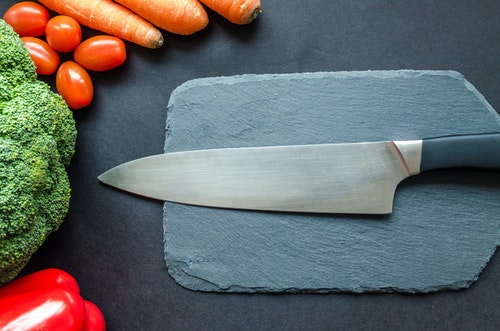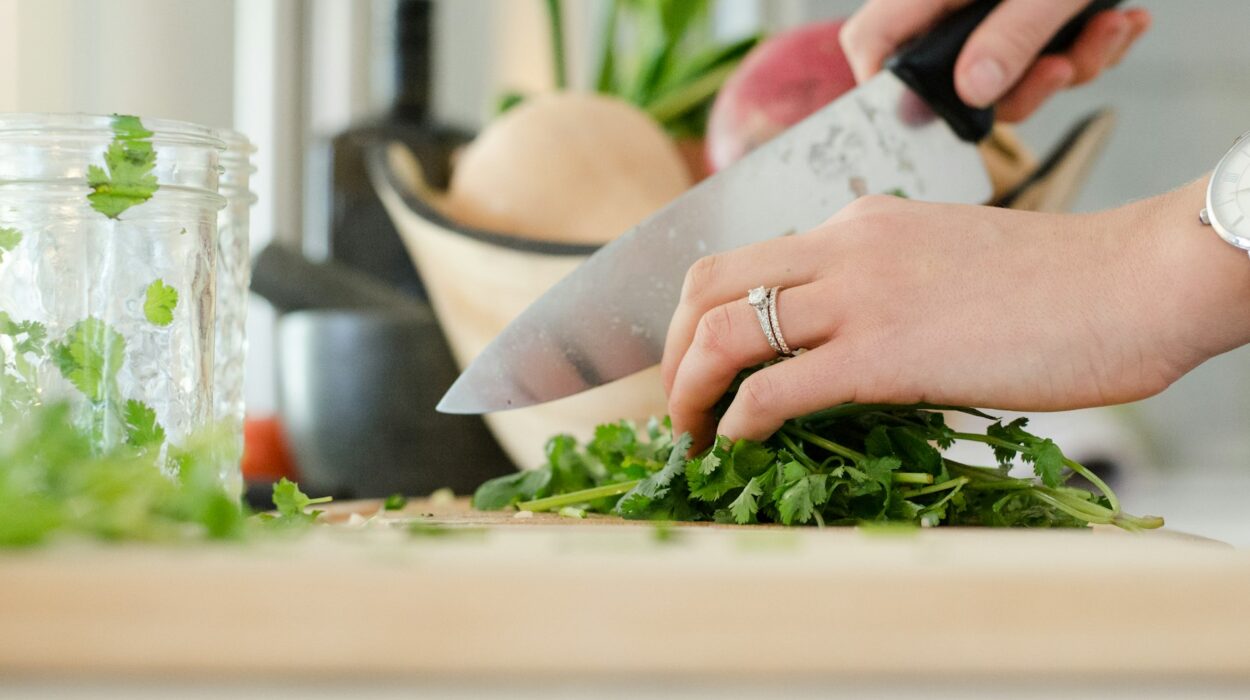Welcome to this comprehensive guide on how to take care of Japanese knife. Japanese knives are renowned for their precision, sharpness, and beauty, making them a cherished tool in any culinary enthusiast’s kitchen. Proper care and maintenance are essential to ensure these knives retain their exceptional qualities over time.
By following the tips and techniques outlined in this article, you can keep your Japanese knife in pristine condition and enjoy its tremendous performance for years to come. Let’s dive into the details and learn how to take care of Japanese knife properly.

Understanding the Anatomy of Japanese Knives
Before we delve into maintenance tips, it’s important to understand the anatomy of Japanese knives. These knives consist of several key components:
- Blade: The blade is the sharp, cutting-edge portion of the knife. Japanese knife blades are typically made from high-carbon steel, known for their exceptional sharpness and edge retention.
- Handle: The handle provides a comfortable grip and control while using the knife. It is often crafted from traditional materials such as wood or composite materials.
- Tang: The tang is the part of the blade that extends into the handle, providing stability and balance to the knife.
- Edge: The edge refers to the sharpened portion of the blade, which comes into direct contact with the food being cut.

Proper Cleaning Techniques
Hand Washing for Longevity
To maintain the longevity of your Japanese knife, it’s crucial to clean it properly. Avoid putting your knife in the dishwasher, as the high heat and harsh detergents can damage the blade and handle. Instead, follow these steps for hand washing:
- Rinse immediately after use: Rinse the knife with warm water to remove any food particles.
- Use gentle soap: Apply a small amount of mild dish soap to a sponge or cloth and gently scrub the blade.
- Handle with care: Pay extra attention to the blade’s edge, ensuring you clean it thoroughly without applying too much pressure.
- Dry promptly: Once cleaned, dry the knife immediately with a clean towel to prevent water spots and potential rust.

Storing Your Japanese Knife
Choosing the Right Storage Option
Proper storage is essential to protect your Japanese knife from damage and maintain its sharpness. Consider the following storage options:
- Knife Block: Investing in a high-quality knife block provides a safe and convenient storage solution, keeping the blades protected and easily accessible.
- Magnetic Strip: A magnetic strip mounted on the wall is an excellent space-saving option. It allows you to display your knives while keeping them securely in place.
- Knife Sheath: For those who prefer to keep their knives in a drawer, using a knife sheath or blade guard will prevent the blades from coming into contact with other utensils, reducing the risk of damage.

Sharpening and Honing Your Japanese Knife
The Importance of Regular Maintenance
Maintaining the sharpness of your Japanese knife is crucial for optimal performance. Regular sharpening and honing will ensure your knife stays razor-sharp and ready for any culinary task. Let’s explore the techniques to keep your knife in top condition:
Sharpening
Sharpening your Japanese knife involves removing a small amount of metal from the blade to create a new, sharp edge. Follow these steps for effective sharpening:
- Choose the right sharpening stone: Select a high-quality sharpening stone with a grit appropriate for your knife’s needs.
- Soak the stone: Immerse the sharpening stone in water for approximately 10-15 minutes before use.
- Maintain the angle: Hold the knife at the recommended angle (usually around 15 degrees) and make smooth, controlled strokes along the stone.
- Alternate sides: Repeat the process on both sides of the blade to ensure an even edge.
- Finish with a finer grit: Use a finer grit stone to refine the edge and achieve a razor-sharp finish.
Honing
In addition to sharpening, honing your Japanese knife regularly is essential for maintaining its edge alignment. Follow these steps for effective honing:
- Use a honing rod: Select a high-quality honing rod suitable for your knife’s steel.
- Hold the rod vertically: Grip the handle of the honing rod firmly and position it vertically on a stable surface.
- Maintain the angle: Hold the knife at the recommended angle (usually around 15 degrees) against the rod.
- Swipe the blade: Make gentle, sweeping motions along the rod, starting from the base of the blade to the tip.
- Alternate sides: Repeat the process on both sides of the blade to ensure even alignment.
For a detailed guide on sharpening techniques, visit Knife Sharpening Tips.
Handling and Usage Tips
Proper Cutting Techniques
Using the correct cutting techniques not only enhances your culinary skills but also ensures the longevity of your Japanese knife. Consider the following tips:
- Use a proper cutting surface: Opt for a wooden or plastic cutting board to protect the blade from excessive wear.
- Avoid twisting and prying: Japanese knives are designed for precise cutting, so avoid using them for tasks such as prying open cans or cutting through bones.
- Maintain a consistent cutting motion: Use smooth, controlled strokes and avoid excessive force or chopping motions.
Maintaining the Handle
Preserving the Handle’s Integrity
In addition to caring for the blade, it’s important to maintain the handle of your Japanese knife. Follow these tips to preserve the handle’s integrity:
- Keep the handle dry: After washing, ensure the handle is thoroughly dried to prevent moisture from causing damage or warping.
- Apply periodic oiling: For wooden handles, periodically apply food-safe oil to keep the wood hydrated and prevent cracking.
- Avoid prolonged exposure to water: Minimize the handle’s exposure to water to prevent potential damage over time.
Common Mistakes to Avoid
Ensuring Longevity through Proper Care
To ensure the longevity of your Japanese knife, it’s important to avoid common mistakes that can lead to damage. Here are some key points to keep in mind:
- Avoid cutting on hard surfaces: Refrain from using your knife on hard surfaces such as glass or granite, as they can dull the blade.
- Don’t use excessive force: Applying excessive force while cutting can damage the blade and affect its performance.
- Avoid storing knives loosely: Storing knives in a drawer without proper protection can result in blade damage and potential injuries.
- Regularly maintain the edge: Neglecting regular sharpening and honing can lead to a dull blade and reduced cutting performance.
Choosing the Right Japanese Knife
Finding the Perfect Fit for Your Needs
Selecting the right Japanese knife is essential for achieving optimal results in the kitchen. Consider the following factors when choosing a Japanese knife:
- Blade type: Determine the type of blade that suits your cooking style, such as a Gyuto (chef’s knife), Santoku (multipurpose knife), or Nakiri (vegetable knife).
- Steel quality: Look for high-carbon steel blades known for their sharpness and edge retention.
- Handle comfort: Choose a handle material that feels comfortable and secure in your hand.
- Budget: Consider your budget and invest in a knife that offers the best value for your money.
For information on the best Japanese knife brands, visit Top Japanese Knife Brands.
Enhancing Your Knife Skills
Practicing Techniques for Precision
Mastering knife skills can significantly enhance your cooking experience. Here are some tips to improve your knife skills:
- Practice proper grip: Hold the knife with a firm grip, ensuring control and stability.
- Utilize the claw technique: When cutting, tuck your fingers inward to create a claw shape, protecting your fingers while maintaining control.
- Start with basic cuts: Practice basic cutting techniques such as slicing, dicing, and julienning to build confidence and precision.
FAQs: How to Take Care of Japanese Knife
What should I avoid cutting with my Japanese knife?
Avoid cutting bones, frozen foods, and hard surfaces to prevent damage to the blade.
How often should I sharpen my Japanese knife?
Sharpen your Japanese knife every 6-12 months, and regularly hone it to maintain the edge.
Can I use a dishwasher to clean my Japanese knife?
No, hand wash your Japanese knife to preserve its integrity and avoid damage.
For more information on cleaning techniques, visit How to Clean a Knife.
As an Amazon Associate, I earn from qualifying purchases.


